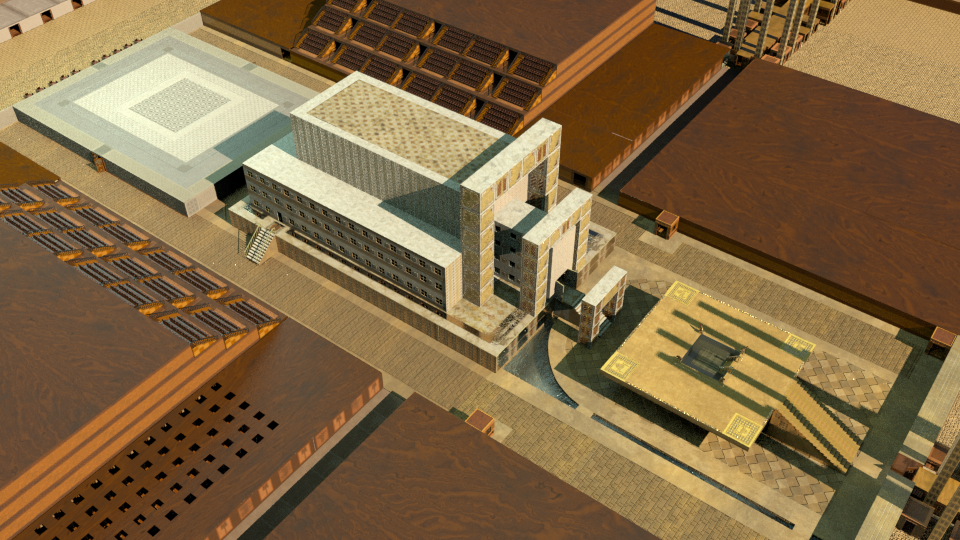By Dr. Charles Ruark, MD
The thesis of this lesson is that the structure described in Ezekiel 40-48 is mainly a personal residence, i.e., a home and secondarily a formal house of worship, i.e., a temple.
The Hebrew word for “house” is bayit meaning house, home, or personal residence.
The Hebrew word for “temple” is heykal meaning palace, temple, or part of a temple like the nave or most holy place.
Heykal is therefore more formal and used to indicate a house of worship, whereas bayit is used to indicate a home.
In Ezekiel 40-48 regarding the structure known as Ezekiel’s temple, bayit occurs 48 times. The word heykal occurs 9 times. Interestingly, chapter 41 is the first time we encounter the Hebrew word heykal.
Ezekiel 41 is the chapter of measurements of the structure commonly referred to as the inner temple, including its wall, platform, free spaces, separate areas, and its length and width. It is also the chapter that includes the measurements of the nave and most holy place and all their structures, including their side pillars, side chambers, and entrances/exits. It is the one chapter where the use of heykal would be more appropriate than bayit, if our thesis is correct. Heykal is used 8 times in this chapter.
Ezekiel 42:8 is the 9th and last time we see Ezekiel use the formal word for temple or heykal. If you look carefully at the schematic you will see that the chambers in question, which are the purple chambers in the schematic, overlap the nave or main room by 10 cubits or 17.5 feet. These purple chambers are of length 100 cubits. They overlap the rear 50% of the temple or 50 cubits of the temple.
Therefore 42:8 is the one instance outside of 41 where Ezekiel’s use of heykal would be more appropriate than bayit. Inside 41 bayit is used in 41:5 in reference to the 6 cubits in width temple wall which according to our design surrounds the nave and Most Holy Place, i.e., the entire residence, not including the porch which has a simpler wall according to our design. Therefore, bayit would be more appropriate than heykal if our thesis is correct.
The NASB 2020 translates heykal as “sanctuary” or “main room” in 41 and “main room” in 42:8.
The English Standard Version (ESV) translates heykal as “nave” in 42:8.
The Holman Christian Standard Bible translates it as “great hall”.
I believe Ezekiel’s use of heykal in 42:8 to be evidence that our schematic is correct and evidence of the amazing precision of Ezekiel. Also, the prevalence of bayit supports our thesis that the structure described in 40-48 is mainly a personal residence and secondarily, a temple or house of worship.


